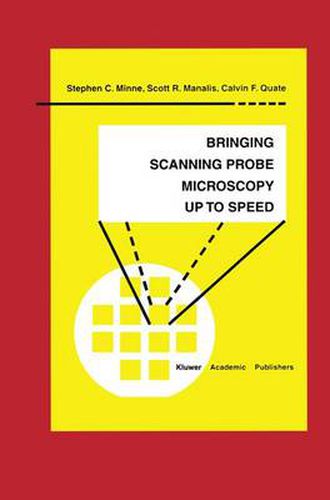Readings Newsletter
Become a Readings Member to make your shopping experience even easier.
Sign in or sign up for free!
You’re not far away from qualifying for FREE standard shipping within Australia
You’ve qualified for FREE standard shipping within Australia
The cart is loading…






This title is printed to order. This book may have been self-published. If so, we cannot guarantee the quality of the content. In the main most books will have gone through the editing process however some may not. We therefore suggest that you be aware of this before ordering this book. If in doubt check either the author or publisher’s details as we are unable to accept any returns unless they are faulty. Please contact us if you have any questions.
Bringing Scanning Probe Microscopy Up to Speed introduces the principles of scanning probe systems with particular emphasis on techniques for increasing speed. The authors include useful information on the characteristics and limitations of current state-of-the-art machines as well as the properties of the systems that will follow in the future. The basic approach is two-fold. First, fast scanning systems for single probes are treated and, second, systems with multiple probes operating in parallel are presented.
The key components of the SPM are the mechanical microcantilever with integrated tip and the systems used to measure its deflection. In essence, the entire apparatus is devoted to moving the tip over a surface with a well-controlled force. The mechanical response of the actuator that governs the force is of the utmost importance since it determines the scanning speed. The mechanical response relates directly to the size of the actuator; smaller is faster. Traditional scanning probe microscopes rely on piezoelectric tubes of centimeter size to move the probe. In future scanning probe systems, the large actuators will be replaced with cantilevers where the actuators are integrated on the beam. These will be combined in arrays of multiple cantilevers with MEMS as the key technology for the fabrication process.
$9.00 standard shipping within Australia
FREE standard shipping within Australia for orders over $100.00
Express & International shipping calculated at checkout
This title is printed to order. This book may have been self-published. If so, we cannot guarantee the quality of the content. In the main most books will have gone through the editing process however some may not. We therefore suggest that you be aware of this before ordering this book. If in doubt check either the author or publisher’s details as we are unable to accept any returns unless they are faulty. Please contact us if you have any questions.
Bringing Scanning Probe Microscopy Up to Speed introduces the principles of scanning probe systems with particular emphasis on techniques for increasing speed. The authors include useful information on the characteristics and limitations of current state-of-the-art machines as well as the properties of the systems that will follow in the future. The basic approach is two-fold. First, fast scanning systems for single probes are treated and, second, systems with multiple probes operating in parallel are presented.
The key components of the SPM are the mechanical microcantilever with integrated tip and the systems used to measure its deflection. In essence, the entire apparatus is devoted to moving the tip over a surface with a well-controlled force. The mechanical response of the actuator that governs the force is of the utmost importance since it determines the scanning speed. The mechanical response relates directly to the size of the actuator; smaller is faster. Traditional scanning probe microscopes rely on piezoelectric tubes of centimeter size to move the probe. In future scanning probe systems, the large actuators will be replaced with cantilevers where the actuators are integrated on the beam. These will be combined in arrays of multiple cantilevers with MEMS as the key technology for the fabrication process.